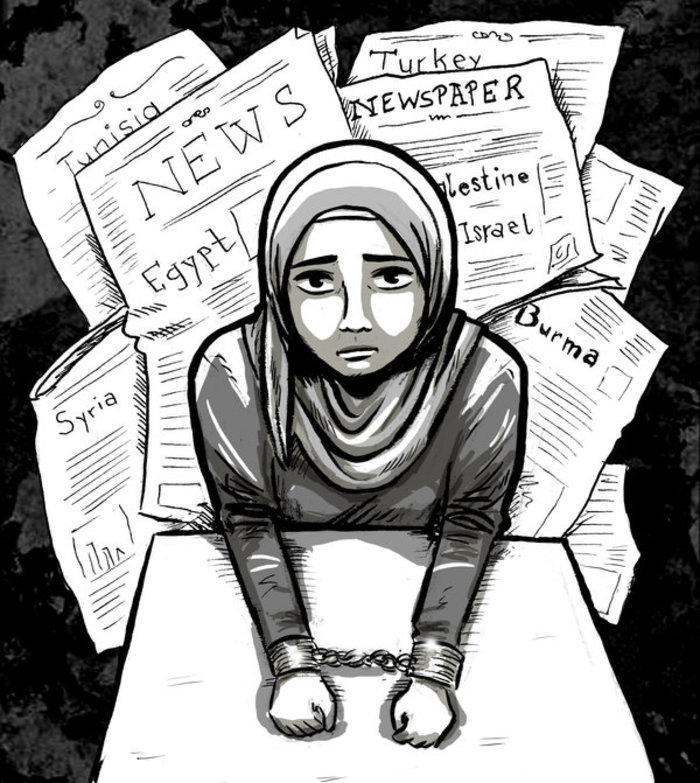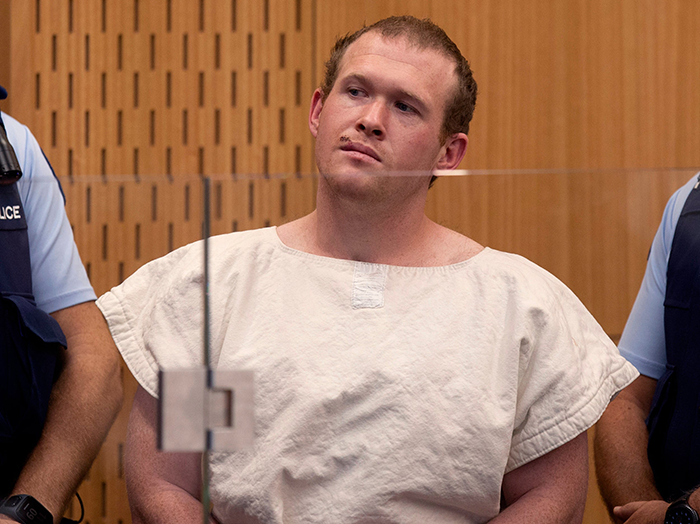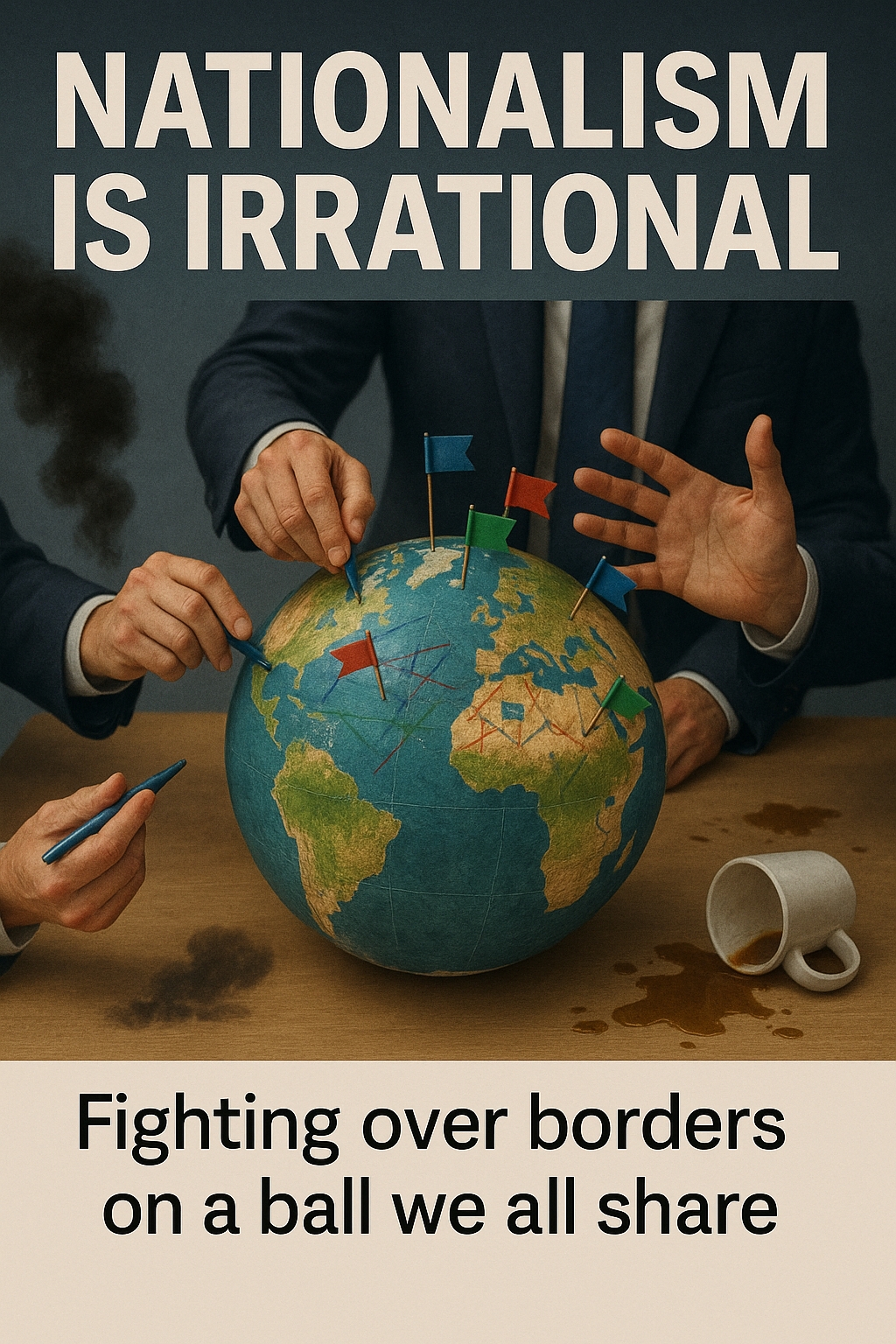Islamophobic View of Turkey’s History
Cherry-picked histories trigger the guns of scapegoating
Empowering Weak & OppressedHayy Yaqzan
Rabi' al-Awwal 04, 1441 2019-11-01
Special Reports
by Hayy Yaqzan (Special Reports, Crescent International Vol. 48, No. 9, Rabi' al-Awwal, 1441)
After the deadly assaults on two masjids in Christchurch, New Zealand in March 2019, it was revealed that the attacker kept no secrets about his inspiration. Not only did he publish a 74-page “manifesto” to explain why he targeted Muslims, but he also inscribed several names onto his weapons. One of the names was that of Milos Obilic, a Serb nationalist projected as a “hero” who supposedly fought against the Ottomans at the Battle of Kosovo (1389) and assassinated Sultan Murad I. Also transcribed was “Turkofagos,” Greek for “Turk-eater.” As Jasmin Mujanovic, a political scientist, observed, these references were “steeped in toxic, faux-historical narratives about ‘defending’ white Christendom.”
I was thinking of none of this earlier this year as I excitedly packed my bags for my trip to Istanbul, Turkey. I had never been to Istanbul before, but had for years read about the remarkable history of this city. It was also my first solo trip to anywhere other than the US; I knew that traveling alone would allow me to make the most of my time in Istanbul without worrying about bothering others. I was enjoying the thrill of it all before I even boarded the flight.
I hit the ground running in Istanbul, where I would only be staying for less than three days. Dropping my bags off at the hotel and with my ears still ringing, I rushed to pray Maghrib at the Sultan Ahmet Masjid, also known as the Blue Masjid. As I walked around the masjid, admiring the architecture, it hit me for the first time that having studied the history of many of these buildings and the city as a whole, I was going to experience them very differently from someone who is only awed by their aesthetic beauty.
The Sultan Ahmet Masjid was built in the early-1600s, as part of the sultan’s effort to reassert his power after ending the long Ottoman wars on two fronts, one with the Habsburgs of Europe and the other with the Safavids of Iran. He built it on the ancient ruins of the Grand Palace, once home to Byzantine (Roman) emperors. Byzantium (after the Greek king, Byzas) was the oldest known name of this 2,700-year-old city.
The next morning, I went to visit what was, for me, the most important place in Istanbul: the grave of a well-known companion of the Prophet (pbuh), Abu Ayyub al-Ansari. He was buried here because he had joined an early Muslim expedition (in 669ce) to this city, then known as Constantinople. He passed away and was buried outside its walls. What many people perhaps do not know is that for years, his grave was also venerated by many Christians of the city. They would pray here for rain and good health, and a fountain is said to have sprung up next to his grave at which the sick would wash themselves. One Greek Orthodox cult dedicated to St. Basil even associated him with Abu Ayyub!

Everywhere in Istanbul, there are echoes of history that defy simple explanation. My next stop, close to the grave of Abu Ayyub, was the 1,500-year-old Church of the Holy Saviour at Chora, which was destroyed not by the Muslim Ottomans but by Christian Crusaders. Also close by were the haunting Theodosian Walls, built to defend the city. I was able to climb part of the ancient walls, amazed that they were still here.
I thought of all those who had come face-to-face with the walls of this city. Here’s a brief list of those who actually managed to get past them: Darius, the Spartans, Athenians, Alexander, Romans, Crusaders, Ottomans, Italians, French and British. That’s not to speak of the many failed attempts to capture the city — including 17 attempts by Muslims. The Ottomans, in May of 1453, became the only Muslim force to successfully claim Istanbul.
My next few stops were the imperial mosques and tombs of the most famous Ottoman sultans, Mehmet II (died 1446), Selim I (died 1520), and Suleyman (died 1566). Each stop brought up memories of what I knew of that sultan and his time — the good, the bad and the ugly. During the reign of Suleiman the Magnificent, the Lutheran Book of Common Prayer used in faraway Iceland asked God to save them from “the cunning of the Pope and the terror of the Turk.” They likely had not heard about the school for medical research that he built into his mosque, or the ground-breaking book on dentistry — one of the first in the world — written by the sultan’s physician, a Jewish refugee from al-Andalus.

I tried to see and do as much as I could. In the Istanbul Archeological Museum, I saw an original copy of the world’s oldest peace treaty. Right outside of it were Gülhane Park, home to a Roman-era column celebrating a victory over the Goths, and on the other side, the city’s first madrasah (Islamic seminary). The must-see Topkapi Museum, which is adjacent to Gülhane Park, offered a glimpse into the private lives of the Ottoman dynasty. Also not too far from here is the Grand Bazaar, one of the oldest markets in the world.
On the other side of the Golden Horn, I climbed up the Galata Tower, built by Genoese merchants as part of the castle defending their colony. Around 1,500 years old, it is one of the oldest towers in the world. In 1204, it was attacked by the Crusaders, causing many Jews and Genoese to be trampled to death as they scrambled in the same stairwells that I was climbing. A few centuries later, the first “intercontinental” flight also took place from here: Hezerfan Çelebi took off from the tower, in Europe, in something like a glider and landed on the other side of the Bosporus Strait, in Asia!
Further north along the Bosporus, I also climbed up Rumeli Hisari, the Throat-Cutter, a fortress built by Sultan Mehmet II which was key to his conquest of the city. Over the centuries it was also used as a customs checkpoint and a prison.
And of course, there was the Aya Sofya, a breathtaking building that stands alone even in a city as dazzling as Istanbul. Stepping inside, I felt almost overwhelmed by the history that had played out in the space in front of me as the 1,500-year-old church became a mosque and then a museum. I could see Ibn Batutah refusing to enter the church because he was told he would have to bow down, and he refused to bow except to Allah (swt). I could see Sultan Mehmet II kneeling outside the church as he toured the city after conquering it, picking up dust and sprinkling it over his head to remind himself to remain humble.
The assailant at Christchurch could see none of this. The history he was focusing on may contain some truth but he was focusing on the shriveling tree in a thriving forest, the dying star in a brilliant galaxy. Experiencing a city such as Istanbul reminds a person that history can simultaneously be cruel and beautiful, and the aspect of it that we focus on is our own choice. Islamophobic narratives may try to draw on history to justify their violence, but they are really only the products of twisted, self-serving minds.


